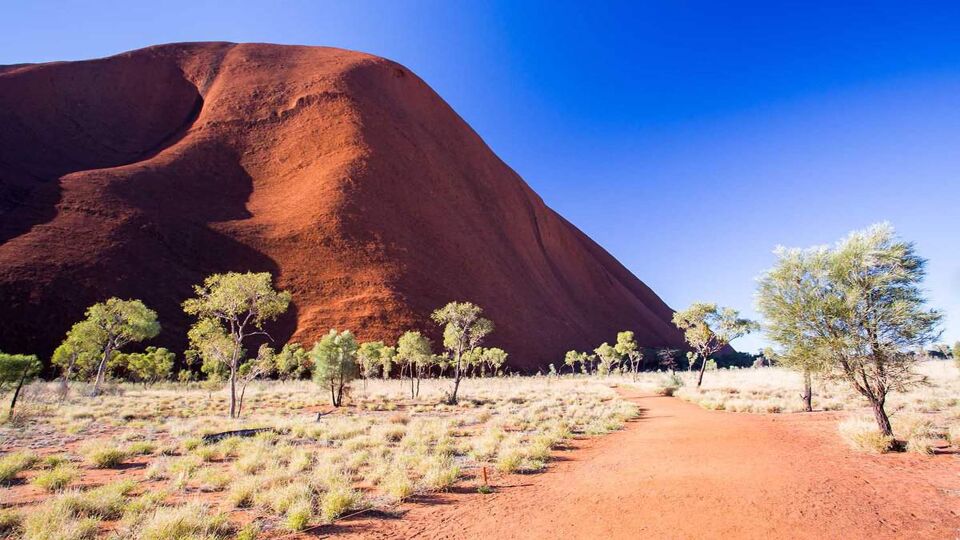Uluru
Price A$239
Min age 0
Rating 4.78 / 5 [357 ratings]
Tour supplied by:
Travel bucket list idea:
Uluru-Kata Tjuta National Park, Northern Territory, Australia

Rising up from the silent desert floor, this gargantuan, ochre-hued monolith is both ethereal and mesmerising – its colour changes depending on the season and time of day. The 10km walk around its base is Uluru’s signature experience and the best way to experience the rock.
Getting up close, you begin to see the complex and intricate beauty. Each part of the walk reveals something different; erosion has cut fissures, gorges and galleries into the sandstone, some containing centuries-old rock art, while some provide shelter for wallabies, possums or bats. You’ll even feel it – the thing has presence.
Along the way, local guides recount the rich, beguiling dreamtime legends that swirl around it. There’s wildlife here too. Despite the arid conditions, the area is rich in flora, ranging from acacia woodlands to grassed claypans.
The Base Walk can be divided into shorter treks. Every day, there is a free, highly-recommended guided walk by park rangers along the ‘Mala’ section – known as the Mala Walk – that ends at the Kantju Gorge. The rangers stop at various sites to point out rock art, to demonstrate the tools traditionally used by the local Anangu people, and to tell you local stories and legends. They’ll also explain how Uluru and Kata Tjuta formed, and talk about the desert environment and the animals and plants that live there.
For the Base Walk, leave your vehicle in the Mala carpark and set off in a clockwise direction around the base of Uluru, following the signs. See the excellent Parks Australia website for a map and overview of the different sections and, if going independently, where to start from.
If you are the warmer months it’s advisable to set off in the early morning – and remember to carry water.
Early morning or late afternoon are the best times to walk, to see Uluru in all its glory at sunrise or sunset. Uluru absorbs heat during the day and seems to glow as the sky darkens. Walking in the middle of day is not recommended, even in winter.
Winter (June to August) is the ideal time to be in the desert. This is also the busiest time of the year, when accommodation is at a premium, so spring and autumn can work well too.
Desert summers (December to March) are notoriously hot and not suitable for much physical activity. It’s also the wet season, when the air is filled with relentless swarms of annoying flies. On the plus side, it’s less crowded.
Our selection of the best Viator tours of this attraction or activity
Uluru
Price A$239
Min age 0
Rating 4.78 / 5 [357 ratings]
Tour supplied by:
Uluru
Price A$199
Min age 0
Rating 4.68 / 5 [143 ratings]
Tour supplied by: